Special Feature
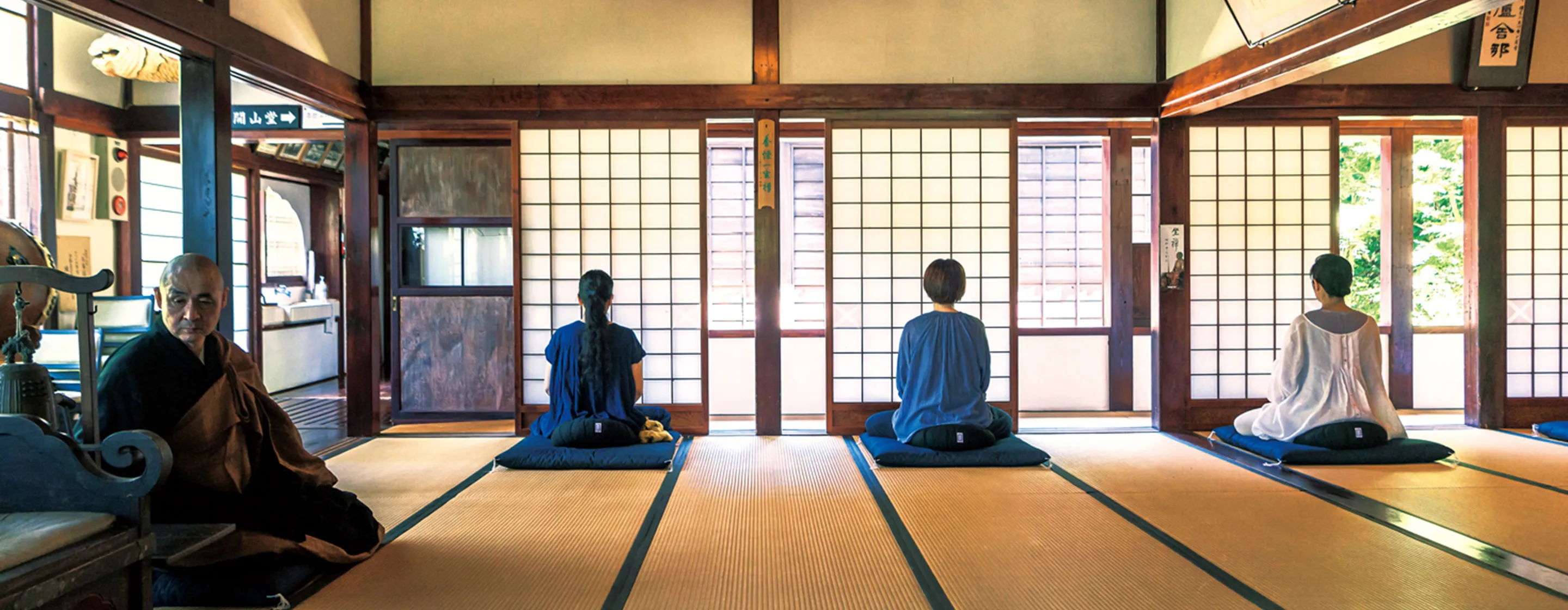
Visiting a Zen Meditation Hall
Zen culture was born in India, proceeding to grow as it was introduced in China and finally blossomed in Japan.
One Zen master once said, “Sit quietly in silence and do nothing. Then spring will come and the grass will grow by itself.” This spirituality has spread throughout the world as “ZEN,” and is attracting attention as a method for reflecting on the meaning of true fulfillment. Zen temples are places where you can receive the message of Zen.
The doorless Sanmon Gate stands eternally open to all; a sign of Zen’s spirit of acceptance.
The Teaching of Zen: Simply Sit and Maintain a Good Posture
Zenpo-ji Temple is one of the three most famous Soto Zen Buddhist prayer temples in Japan. In addition to being a training center for monks, where Zazen meditation is practiced daily, Zazen sessions are held regularly. Here many ordinary people are given the opportunity to experience Zazen meditation.
The Buddhist practice of Zazen meditation is said to have begun about 2,500 years ago when Shakyamuni Buddha sat under a bodhi tree and attained enlightenment. After that, Daruma-Daishi (Bodhidharma), who is said to have sat facing a wall for nine years, spread Zen Buddhism throughout China and then to Japan. The ideas of Zen from the Rinzai Zen School, Soto Zen School, and Obaku Zen School sects spread and had a major impact on the formation of Japanese culture, including suibokuga (ink painting), shodo (calligraphy), karesansui (dry landscape gardening), sado (tea ceremony), and kado (flower arrangement).
Of these three sects, the Soto Zen School sect teaches that “you simply practice Zazen meditation facing a wall. That posture is the posture of a Buddha, and by extension, the posture of enlightenment.”
This way of thinking is called “shikantaza” (just sitting), and involves continuing to just sit without any goal in mind. This is quite different from other sects, for whom the end goal of Zazen meditation is enlightenment.
“You don’t seek anything in the Soto Zen School sect’s practice of Zazen meditation, like resolving your worries or relieving stress. You simply adopt the correct posture and sit. At first, your legs may hurt, you may feel sleepy, and distracting thoughts may enter your mind, but none of these are a problem. As, over the course of repeated practice, the body will adapt unbeknownst to the practitioner.”
Eiji Shinozaki, who is in charge of the Zazen sessions, explains that as the body accustoms itself, the mind quietens, and you enter a state of simply being present; much like animals, trees, and babies.
“When you let go of your thoughts and your mind becomes settled in this way, you realize that what you see and hear in the present moment is something that has been given only to you, and you can embrace the preciousness of your existence,” he states.
Shinozaki also explains that an important teaching in Zen is the “now.” “It is certainly there, anytime and anywhere, but it quickly becomes the past, and the only real now is this very moment. Zazen meditation is about embracing this “now,” which disappears in an instant.”
In our daily lives, we tend to seek purpose, meaning, and value in everything, including in life itself. If through Zen we can empty our minds and feel the uniqueness of both our own existence and the present moment, we may be able to find a deeper sense of security in who we are as individuals.
Zen temples are always ready to provide us with a place for this.
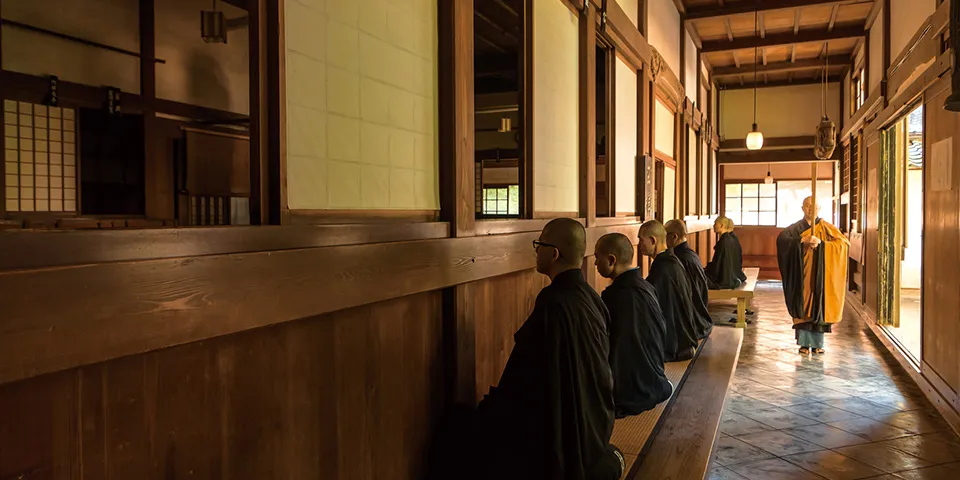
Gyokusen-ji Temple
Founded in 1251, Gyokusen-ji Temple has a nationally designated scenic garden that beautifully colors the landscape throughout the four seasons and reflects both a respect for nature and Buddhist thought. Taking a moment when copying the Heart Sutra in a room that has a view of this famous garden, can dispel the worries that might be plaguing your mind, leaving you in a state of tranquility.
The garden itself is the reason Gyokusen-ji is called the Temple of Flowers, as it blooms different colors throughout the seasons, such as cherry blossoms in spring, Japanese primroses and azaleas in early summer, and bush clover in autumn. However, upon visiting in the height of summer, there were no flowers in the garden, and the shades of green of the trees spread throughout.
“I like this garden when it is awash with green. It is simple, modest, and unassuming,” says the 46th head priest, Kokai Saito. Gyokusen-ji Temple is open to the public through Zazen meditation, sutra copying, shojin ryori (Buddhist vegetarian cuisine), various events and more, the head priest stating, “I want temples to feel more accessible to people.”
“In Zen, you harmonize your mind and body by assuming a seated position.” This is where both Zazen meditation and sutra copying begin.
“Zazen meditation is also said to be an act of letting go. Things you seek and obtain will eventually be lost. True wisdom comes from a heart that can observe things honestly. The appeal of Zen is that it opens up a rich world where you do not seek anything.”
We proceed to prepare for the commencement of the next sutra copying experience, in which we will copy out the Heart Sutra; a scripture of the Soto Zen School. We sit quietly, carefully grind the ink, and then diligently trace the characters with a brush. We wonder what insights can be gained from these simple actions and Saito explains that “Before beginning, we recite ‘The Verse of Four Universal Vows’ which starts with the pledge ‘Living beings are limitless; I vow to deliver them.’ It is a vow to use the wisdom we have gained through our actions to benefit the world. Perhaps happiness can be born from this cycle.”
In today’s age, where it seems many are seeking peace of mind, Zen should be a guide for people’s hearts, says Saito. The temple is not only a place for memorial services and funerals, but also a place to become familiar with Zen. It gives people time to collect themselves in order that they may live better lives.
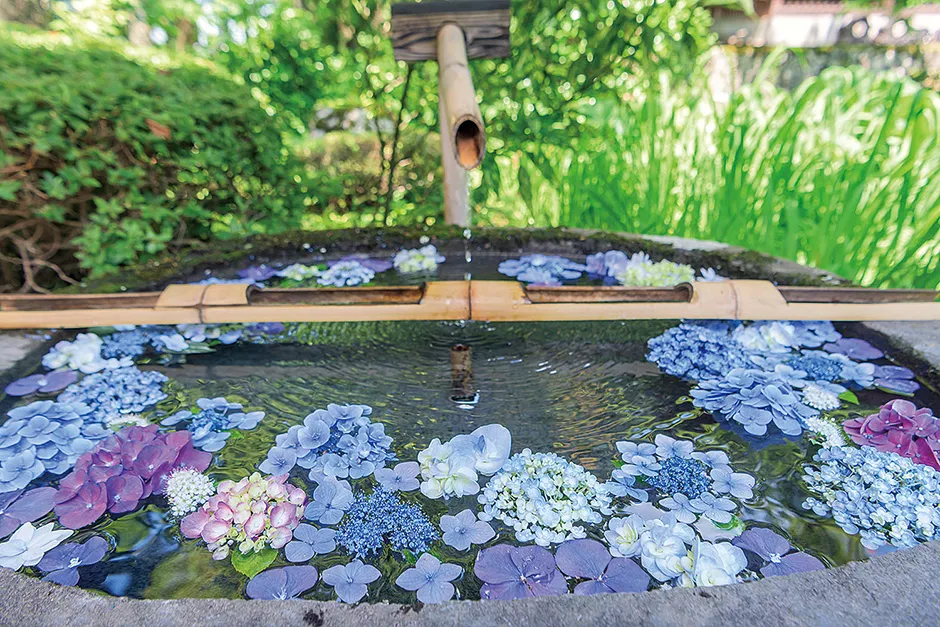
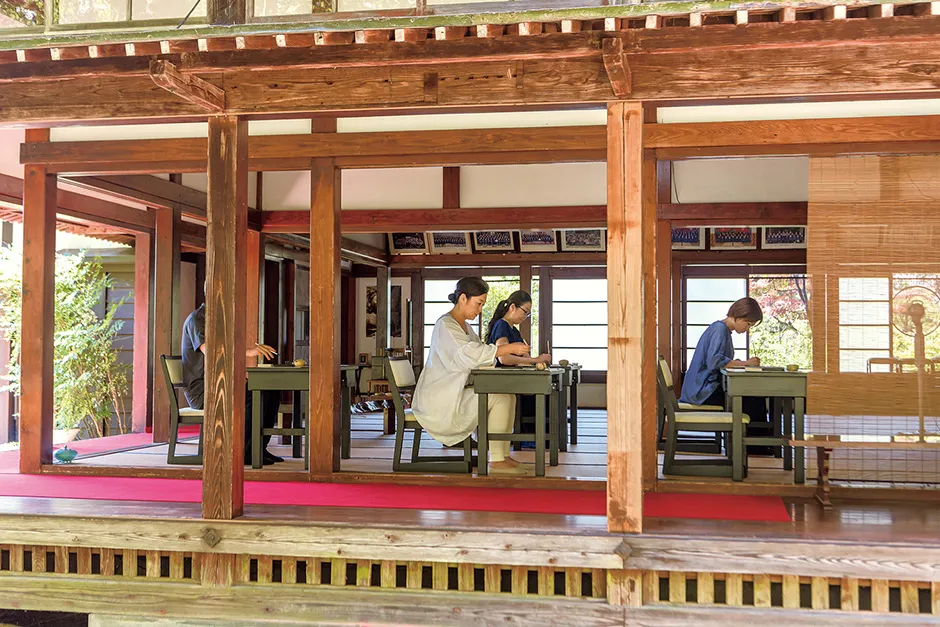
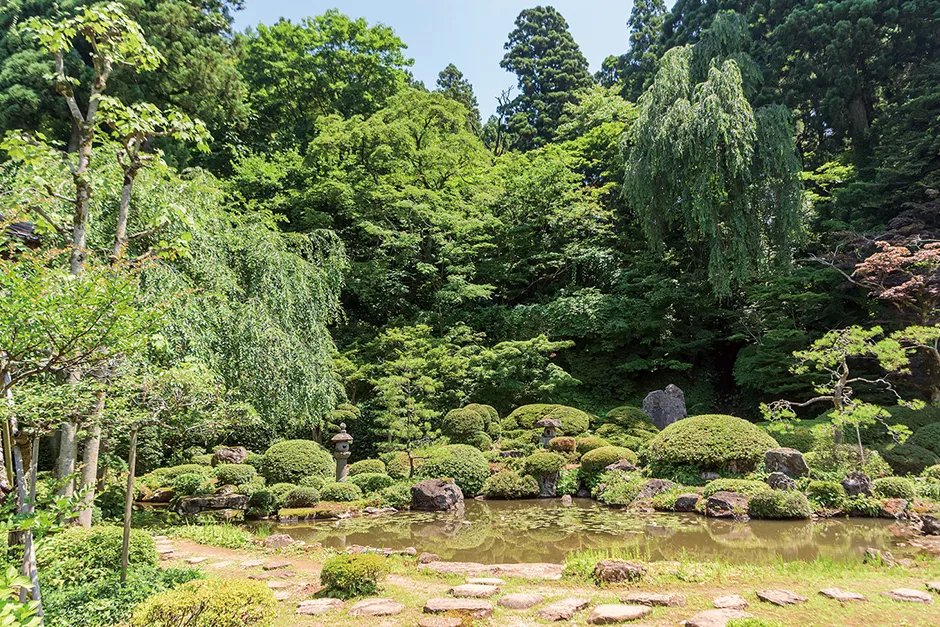
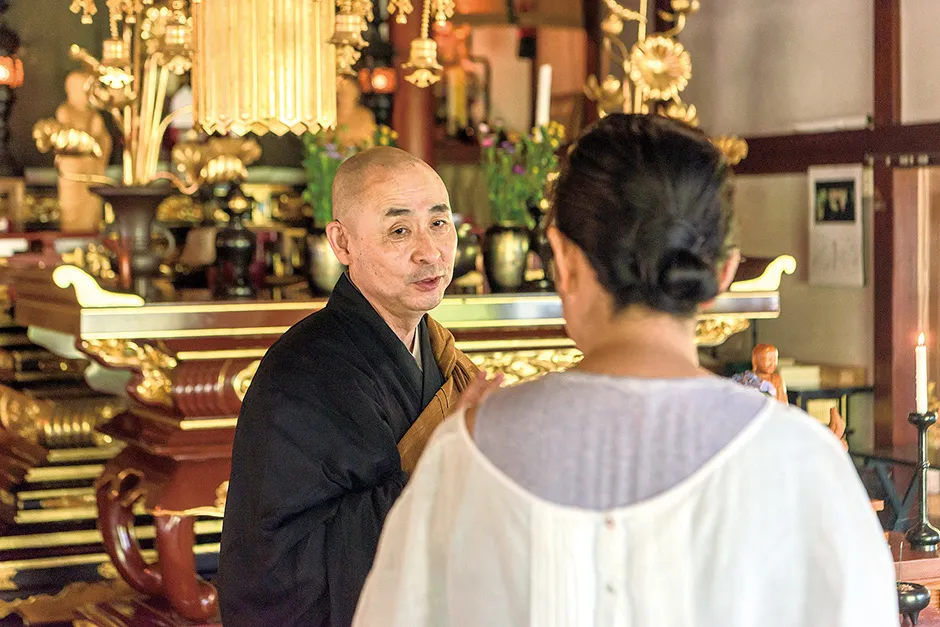
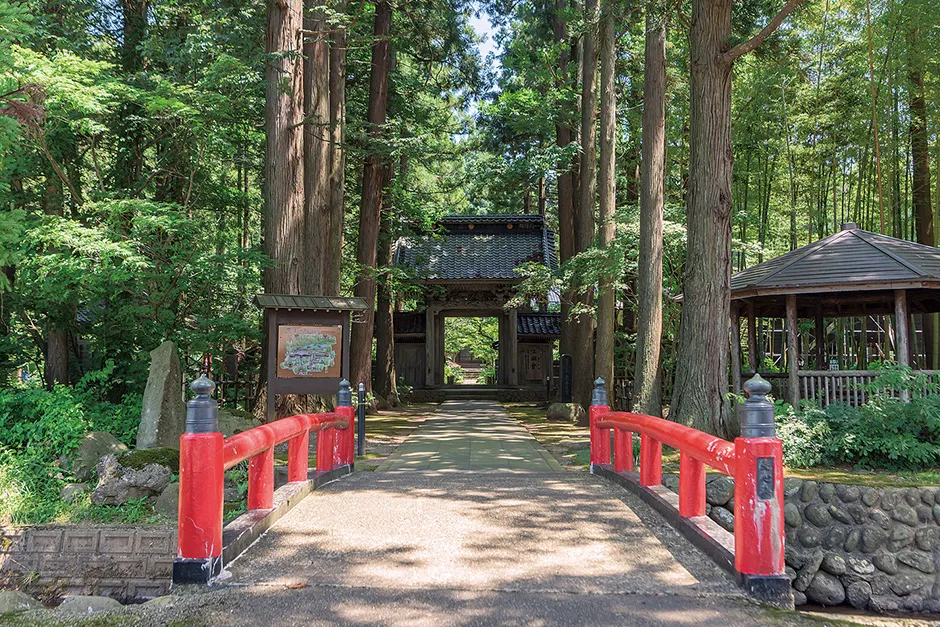
Yousen-ji Temple
“To the east is Mt. Chokai, to the west is the sea. The flowers which bloom here make for resplendent scenery, but there are also many other aspects to be enjoyed here,” is a familiar folk song that remains at Yousen-ji Temple in Yuza-machi. It is a famous temple that traces its lineage directly to the Soto Zen Buddhism Sojiji head monastery. It is also connected to the Japanese mountain ascetic practice, which takes place on Mt. Chokai, known as Chokai Shugen, and after standing the test of time for 1200 years, Yousen-ji Temple speaks to the “mysteriousness of great antiquity.”
The Sanmon Gate is guarded under the piercing gaze of two Nio statues. Beyond lies a towering spruce that looms as if watching over the main hall, which has been standing for over 600 years since the temple was founded. “The mountain behind the temple is still full of stone Buddha statues and other Buddhist statues,” says Genshu Kumagai, the 63rd head priest of Yousen-ji Temple, who became the head priest five years ago. He has since traced the history of this temple, which is home to many important artifacts as well as seven mysterious legends.
Surrounded by nature, the Zazen Meditation Hall of Yousen-ji Temple has alternating atmospheres depending on whether it’s night or day. “At night, you can look up at the starry sky and be embraced by the stillness of the temple, making it an ideal place for Zazen meditation.”
At 7am, we sat with Shuntaro Sato, a representative of the temple’s parishioners. “Zazen meditation of the Soto Zen School is a form of training in the ceasing of seeking answers. This activity of the body and mind is the path itself, and the phenomena of our current lives are the answers themselves,” he stated. By repeating Zazen meditation, one can experience a “trance,” forgetting oneself and becoming one with all things. From there true training begins.
“Zen is the act of doing nothing, the pinnacle of non-religion, an unconditioned phenomena that is not subject to cause, condition, or dependence. All sentient beings possess the inherent potential to achieve buddhahood, so the focus of Zen is not philosophical construction or psychological analysis, but rather ‘deconstruction.’ For example, the desire for self-realization is a strong motivation that drives people and as such is difficult for people to let it go. Zen aids in the deconstruction of this desire,” Sato explains.
The self is no self, and no self is the will of heaven and freedom. Finding this within oneself is the starting point of Zazen meditation, says the chief priest. “Zazen meditation is a way of life that teaches you to live by yourself. You don’t have to modify your personality or your body; you already possess that which you are seeking.”
During that morning’s Zazen meditation, the head priest could be heard saying, “Buddha said, ‘With yourself as a lamp, walk alone like a rhinoceros horn.’”
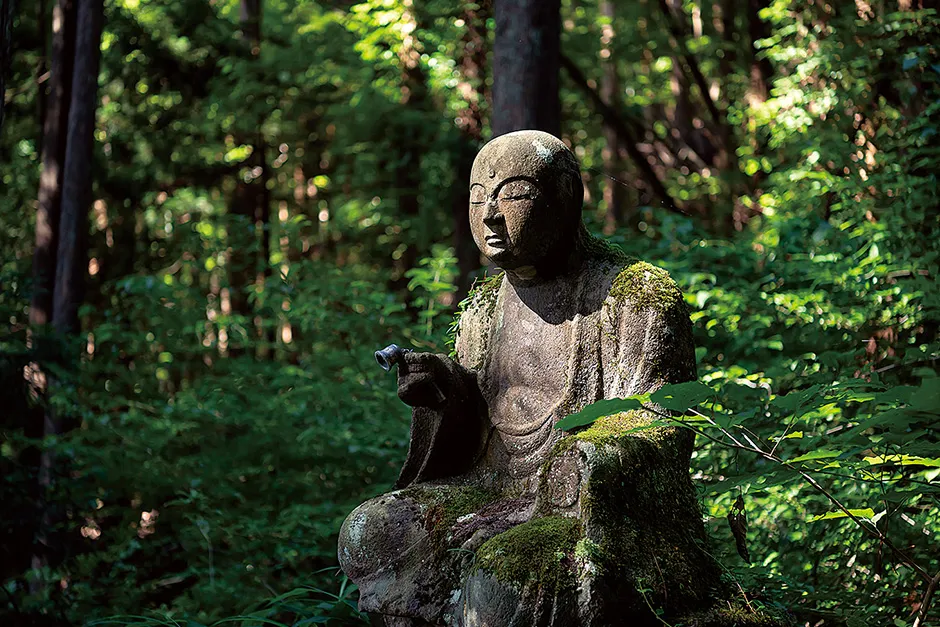
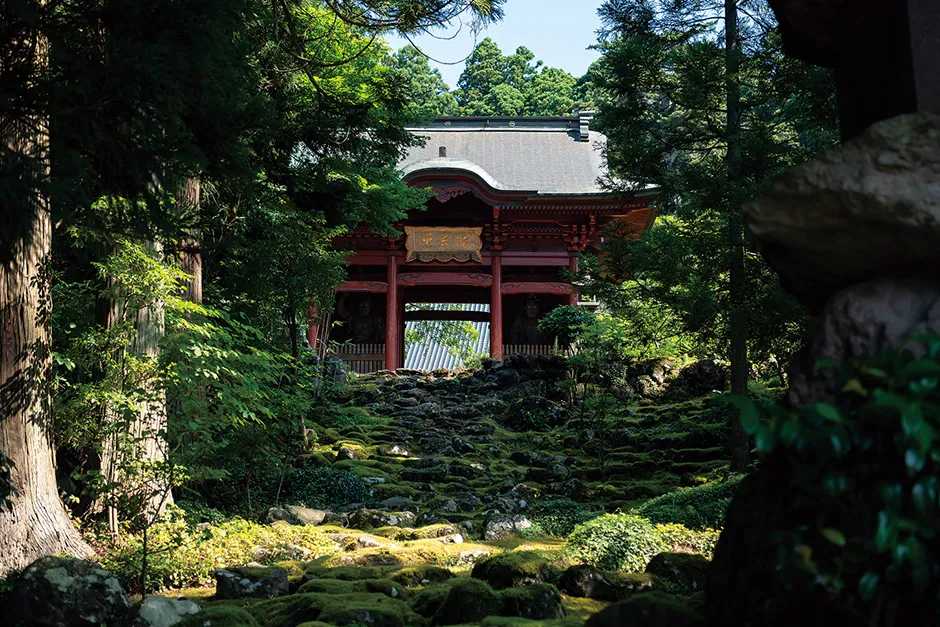
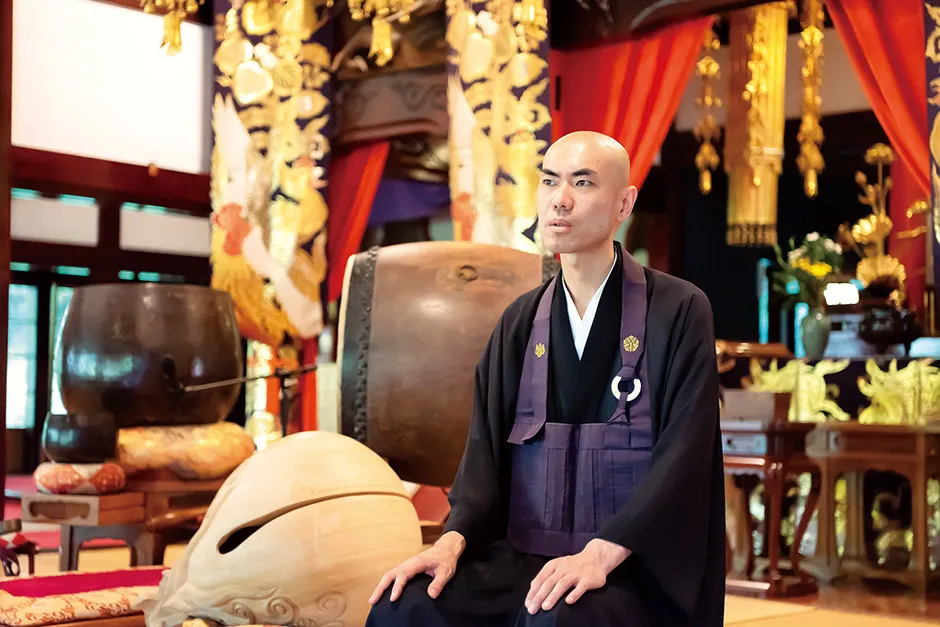
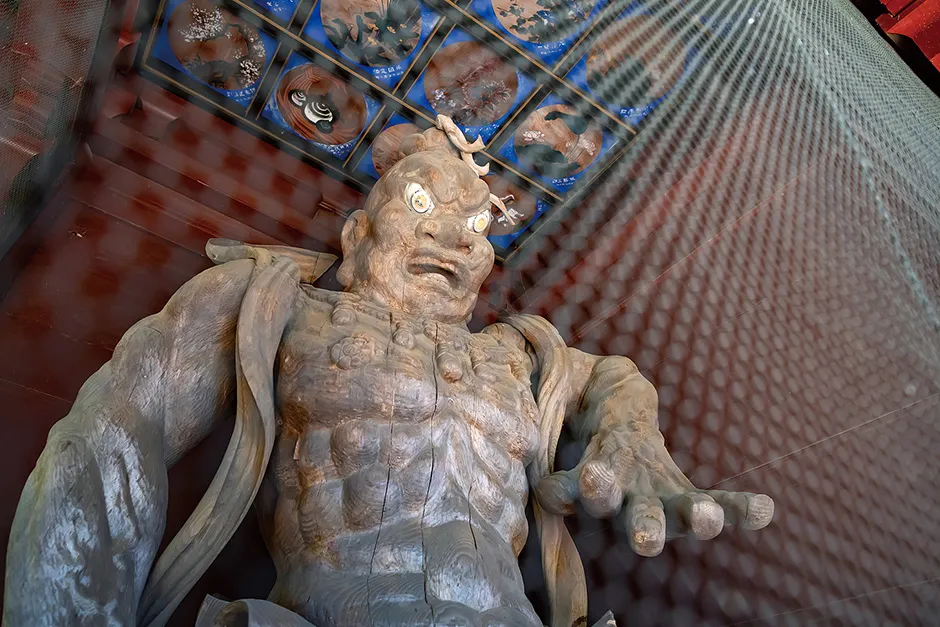
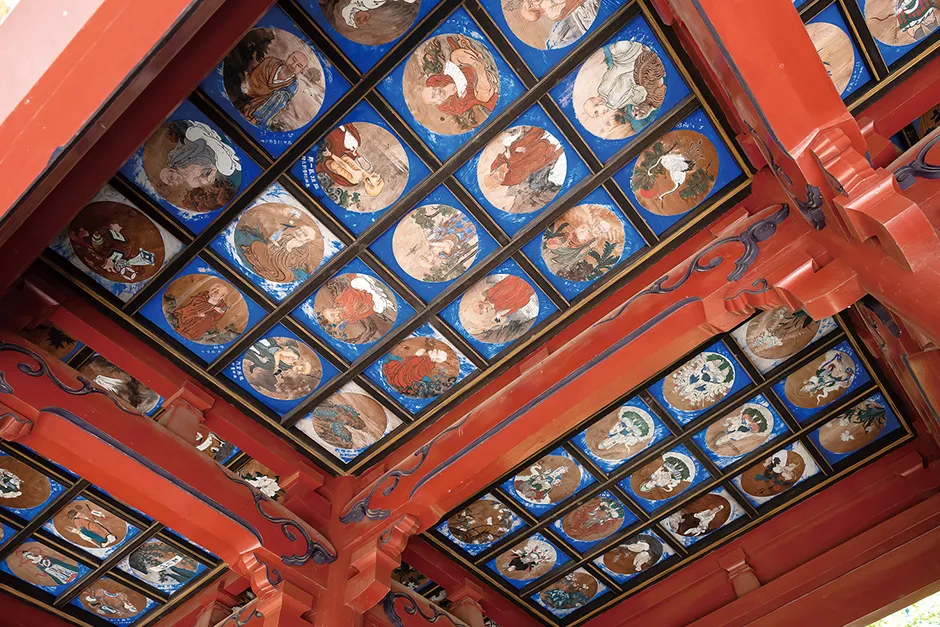
Soko-ji Temple
Facing Soko-ji Temple is Matsuyama Historical Park, while behind the temple lies Chokai no Mori forest park. After passing through the Sanmon Gate at the end of the row of 400-year-old Kinoko Sugi (mushroom-like cedar trees) to enter the main hall, you will be greeted by a view of Horaien Garden, a nationally designated scenic garden.
“Just as there are no doors at the Sanmon Gate, temples are places that are open to everyone,” says Takahiro Hara, the 60th head priest of Soko-ji Temple. “The purpose of Zen Buddhism is to spread Zazen meditation,” he states, and has held regular Zazen sessions for the general public; a tradition that dates back to his grandfather’s time. “Zazen meditation may be somewhat of a challenge, and because of that few people would attend. So we started an event for adults where participants can trace images of the Buddha with a brush pen.”
Choosing the image of the Buddha they want to trace, participants sit in a chair, and under the guidance of the head priest, adjust their posture and mind with abdominal breathing like in Zazen meditation. Starting by placing the palms of the hands together and bowing once, participants then trace the lines of the image of the Buddha. The goal is not to aim for perfection but to just carefully copy the lines of the Buddha while breathing slowly through the nose. After drawing the whorl of white hair on the Buddha’s forehead, participants put down the pen, and place their palms together for a final prayer.
“At the end, we serve our original sweets and matcha tea. After that, visitors are free to spend their time as they like, such as relaxing or strolling through the garden.”
In the mountains behind, there is the Mine-no-Yakushido (Okunoin: Inner sanctuary at the summit) and the Yakushi-do (Nakanoin: Inner sanctuary on the hillside), both of which have spectacular sunsets from their observation decks. There is also Morinoyama-Dojo, which is a hall in the forest where memorial services are held. There are many great places to take an invigorating walk before the journey home.
We asked Hara why he wants to spread Zazen meditation. “Zazen meditation is the gateway to putting your mind and body at ease. I am convinced from experience that the teachings of Zen are a great guide for living. However, Zen is not necessarily bound to Zazen meditation, so I would like people to start by casually experiencing it through copying Buddha images or copying sutras.”
A place where visitors can experience Zazen meditation and much more, Soko-ji Temple embodies Zen’s spirit of acceptance, right through to the fragrant cherry blossoms, water lilies, and red spider lilies that grow in the temple grounds welcoming visitors throughout the seasons.
-

Horaien Garden, nationally designated scenic garden -
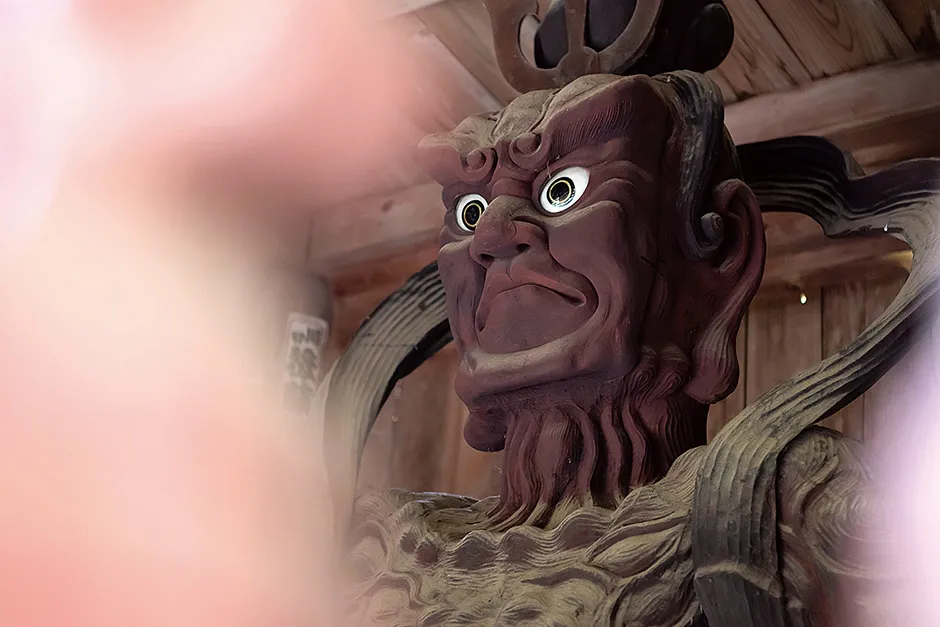
Nio statue at the Sanmon Gate -
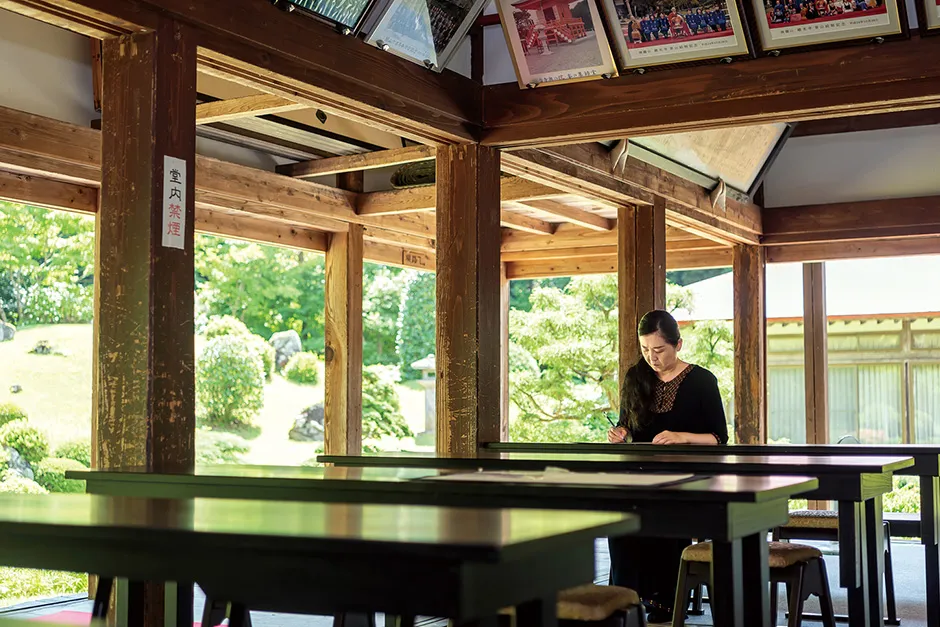
Experience sutra copying in the main hall of Soko-ji Temple -
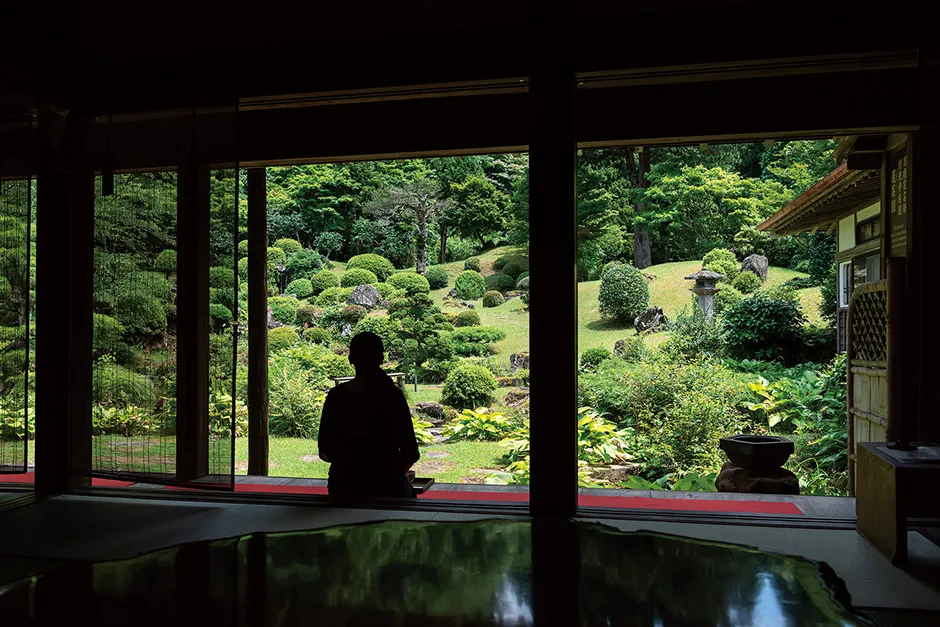
Enjoy the view of Horaien Garden and indulge in a cup of matcha tea (charge applies) -
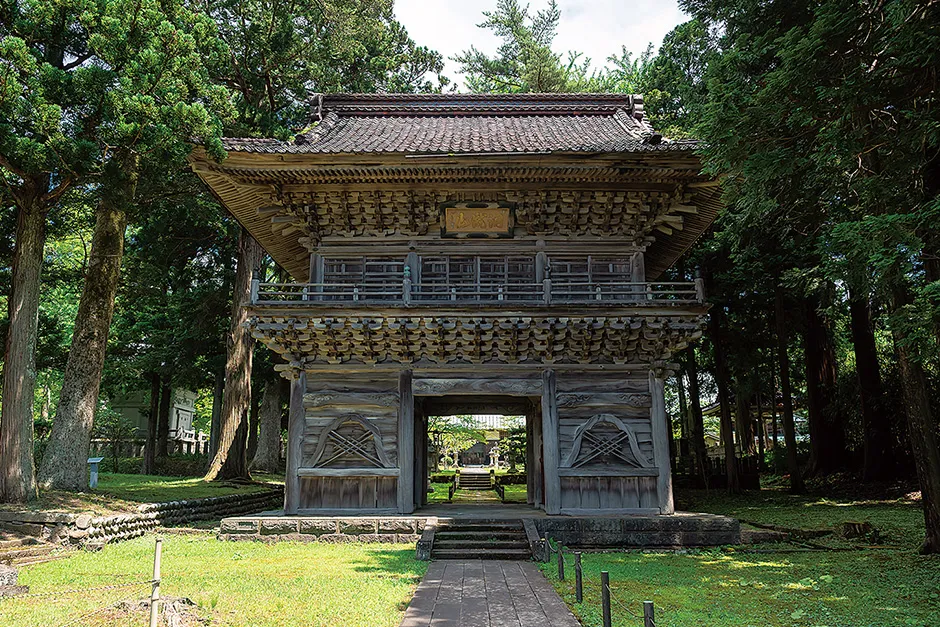
Soko-ji Temple’s Sanmon Gate, built in 1811 -
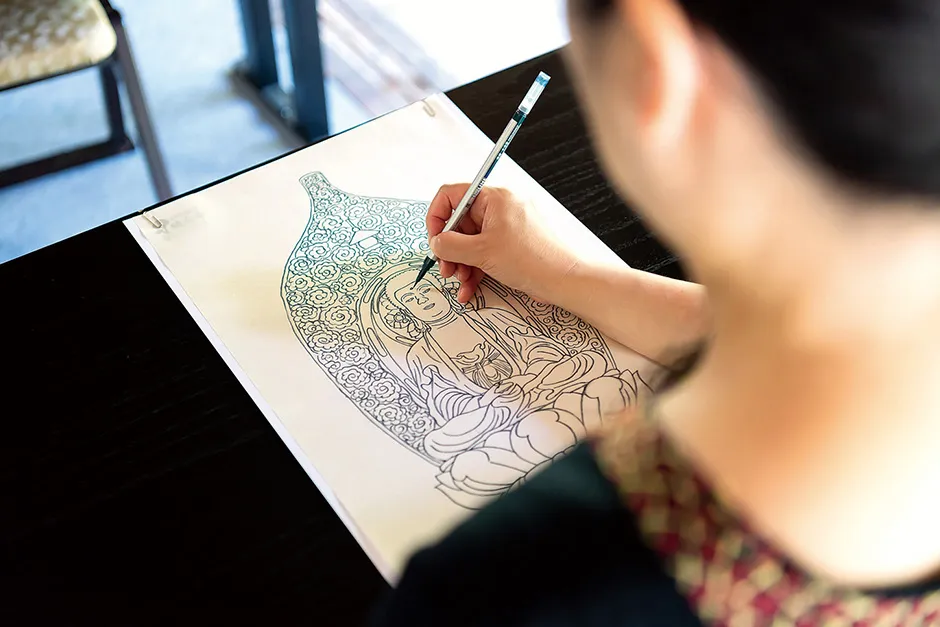
Soko-ji Temple’s popular original Buddha copying experience -

60th Chief Priest Takahiro Hara -
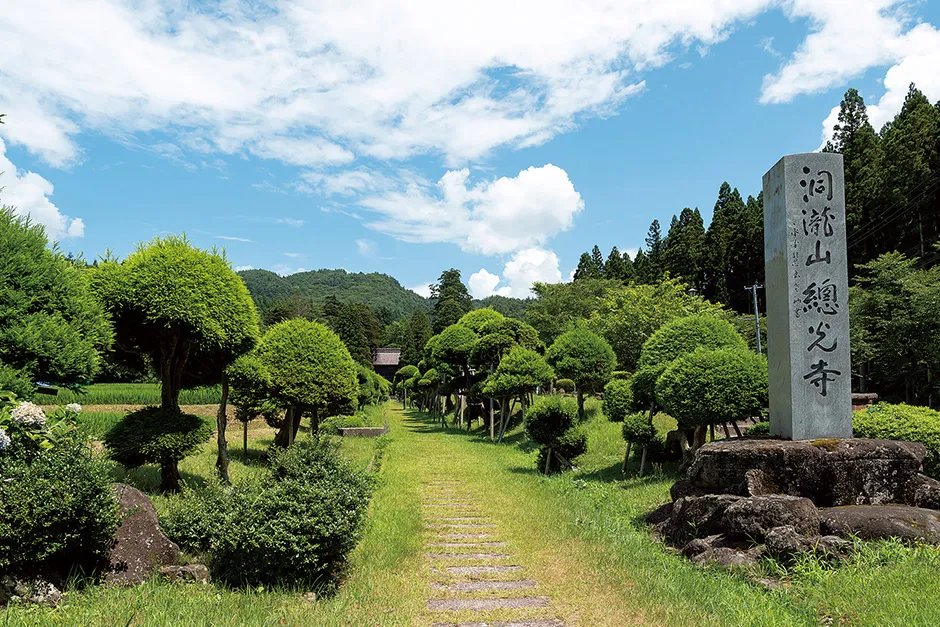
The 400-year-old Kinoko Sugi, natural monument designated by Yamagata Prefecture
